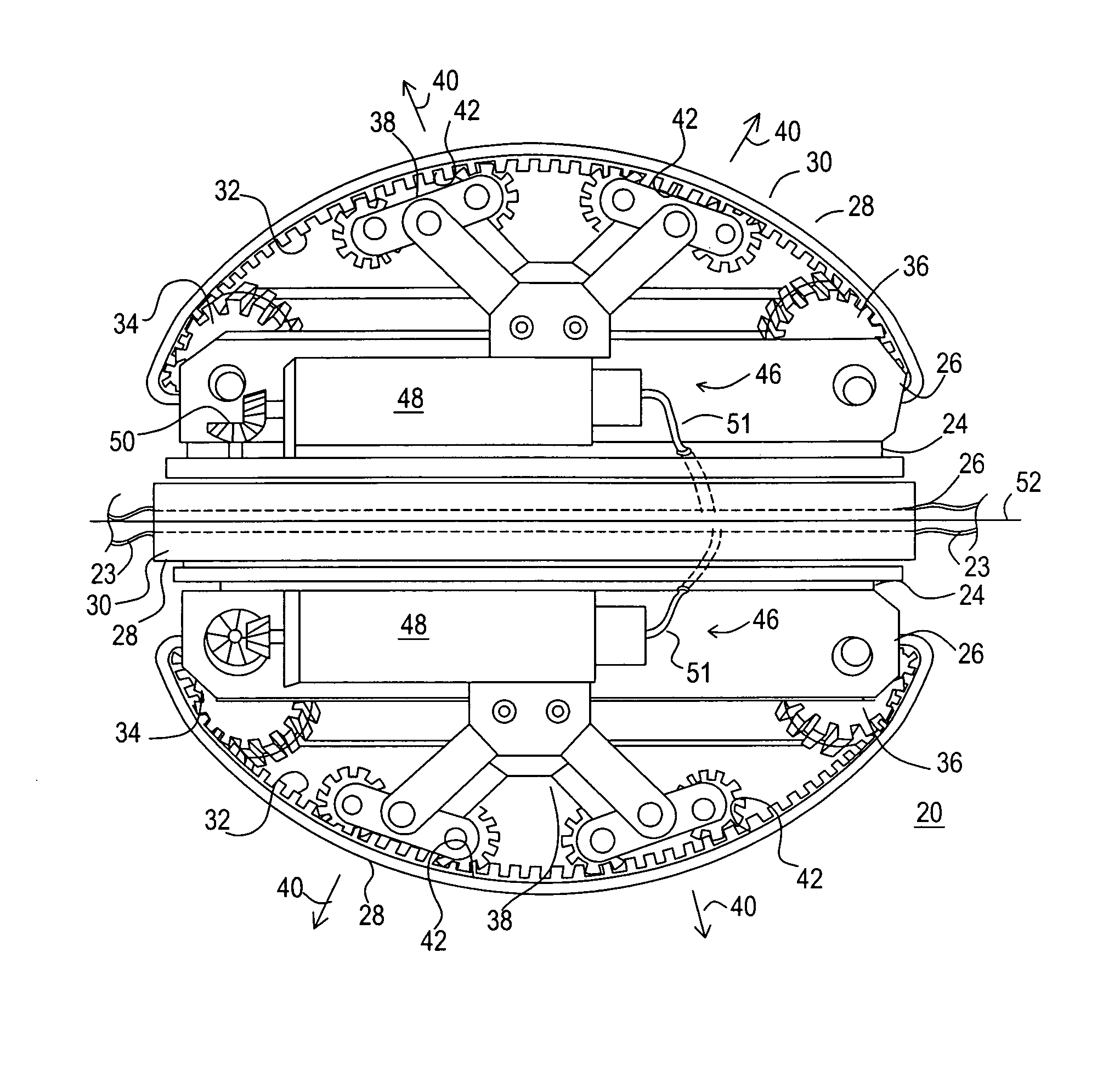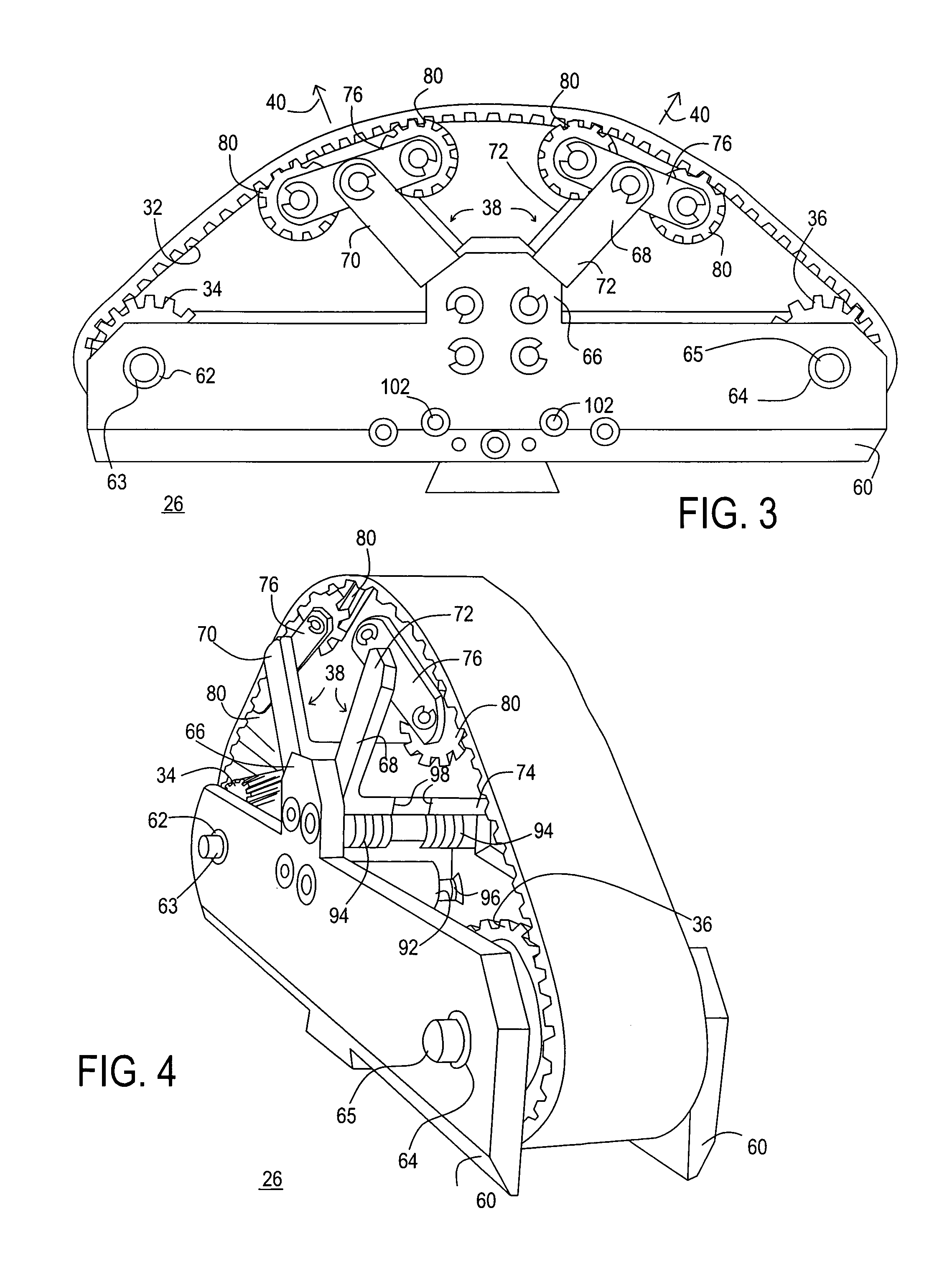Self-propelled vehicle for movement within a tubular member
a tubular member and self-propelled technology, applied in the direction of mechanical equipment, instruments, roads, etc., can solve the problems of pipeline failure, pipeline flaws, lost services and revenues, etc., and achieve the effect of compact structure, convenient maneuverability and robust design
- Summary
- Abstract
- Description
- Claims
- Application Information
AI Technical Summary
Benefits of technology
Problems solved by technology
Method used
Image
Examples
Embodiment Construction
[0039]Referring to FIGS. 1–2, FIG. 1 shows a side view of a self-propelled vehicle 20 in accordance with a preferred embodiment of the present invention, and FIG. 2 shows a schematic end view of self-propelled vehicle 20 within a tubular member 22, such as a pipeline. One or more vehicles 20 may be utilized as part of a pipe inspection system for towing inspection devices, such as transmission and detection units, cameras, sensors, test probes, and the like, through a pipeline system to be inspected. As such, an umbilical line 23 (discussed below) may extend from one or both ends of vehicle 20 for carrying power and / or data.
[0040]Self-propelled vehicle 20 includes a core element 24 and propulsion mechanisms 26 distributed about a perimeter of core element 24. Each of propulsion mechanisms 26 includes a drive belt 28 having an outer side 30 and an inner side 32. A first pulley 34 and a second pulley 36 are encompassed, i.e., surrounded, by drive belt 28. More specifically, each of dr...
PUM
 Login to View More
Login to View More Abstract
Description
Claims
Application Information
 Login to View More
Login to View More - R&D
- Intellectual Property
- Life Sciences
- Materials
- Tech Scout
- Unparalleled Data Quality
- Higher Quality Content
- 60% Fewer Hallucinations
Browse by: Latest US Patents, China's latest patents, Technical Efficacy Thesaurus, Application Domain, Technology Topic, Popular Technical Reports.
© 2025 PatSnap. All rights reserved.Legal|Privacy policy|Modern Slavery Act Transparency Statement|Sitemap|About US| Contact US: help@patsnap.com



